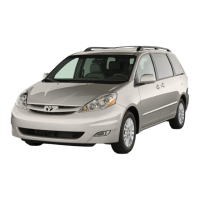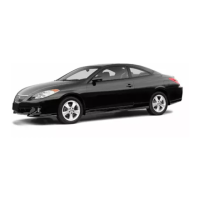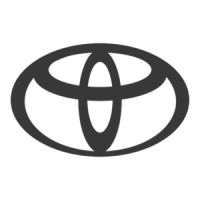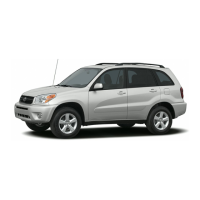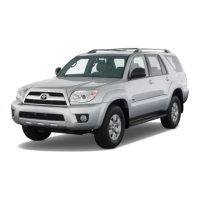04_SEQUOIA_U (L/O 0309)
308
2004 SEQUOIA from Sep. ’03 Prod. (OM34423U)
Cargo
capacity
Weight of the
removed third seat
SEATING CONFIGURATION
VARIATION
In case of removing the rear seats,
it is possible to load as much cargo
as the weight of the removed seats.
(Cargo capacity) = (Total load capac-
ity) − (Total weight of occupants) +
(Weight of the removed rear seats)
Rear seats weights:
Right side 24 kg (53 lb.)
Left side 24 kg (53 lb.)
Determine what kind of tires your
vehicle is originally equipped with.
1. Summer tires
Summer tires are high−speed capabil-
ity tires best suited to highway driving
under dry conditions.
Since summer tires do not have the
same traction performance as snow
tires, summer tires are inadequate for
driving on snow−covered or icy roads.
For driving on snow−covered or icy
roads, we recommend using snow
tires. If installing snow tires, be sure
to replace all four tires.
2. All season tires
All season tires are designed to pro-
vide better traction in snow and to be
adequate for driving in most winter
conditions, as well as for use all year
round.
All season tires, however, do not have
adequate traction performance
compared with snow tires in heavy or
loose snow. Also, all season tires fall
short in acceleration and handling
performance compared with summer
tires in highway driving.
The details about how to distinguish
summer tires from all season tires are
described on page 297.
CAUTION
! Do not mix summer and all sea-
son tires on your vehicle as
this can cause dangerous han-
dling characteristics, resulting
in loss of control.
! Do not use tire other than the
manufacturer’s designated
tires, and never mix tires or
wheels of the sizes different
from the originals.
Types of tires
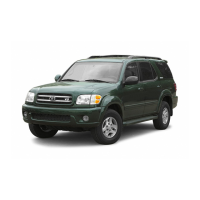
